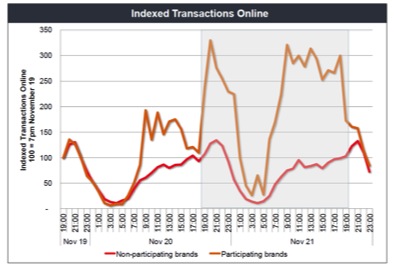Sneeze and you may have missed it.
The Click Frenzy frenzy came and went in a matter of days, yet in that time it managed to reach the consciousness of some 20% of online Australians! That’s quite an achievement.
Their PR machine had triggered something in Australia’s uber-price-sensitive media which led to an incredible amount of coverage in the days leading up to the sale – it really did become a frenzy.
Even before the site ran into capacity issues on their woefully inadequate servers, their business model meant they would only ever make moderate returns. Choosing an all-up-front fixed-fee suggested they doubted the results they could yield for their retail partners preferring instead to cover their costs and hope for a modest return.
All in all, they clearly had no idea how ready the Australian market was for Click Frenzy!
Click Frenzy founder Grant Arnott explained in a rare and touching mia culpa that 300k visitors was their top traffic estimate, so the 1.6m visitors they actually saw blew their infrastructure wide open. To be fair, I think only a handful of sites around the world would cope gracefully with 1.6m concurrent users! The fact is the 7pm launch time was a big part of the problem, internet infrastructure hates concurrency!
Aside from the access issues suffered by many hundreds of thousands of bargain hungry shoppers, many found their way to the registered retailers and boy did they spend!
One retailer example I was shown paid less than $3,000 to participate but yielded over $80,000 in sales. An equivalent Group Buying offer would have cost the business $24 – 30k in commissions! A pretty good outcome for the retailer!
The chart below from Quantium shows the direct impact on participating retailers versus non-participating retailers.
160 retailers of varying sizes participated, and Click Frenzy probably netted an average of 3 – 5k upfront from each, meaning 480 – 800k in Gross Revenue. Not bad, however had they chosen to take a booking fee plus a moderate trailing commission, they would have netted anywhere from $800k ($1k upfront, 5% commission on $80k Average) to $2.4m ($1k upfront, 15% commission on $100k average)!
All credit is due to the Click Frenzy team, they were swept along by a frenzy of their own making albeit they we flattened in the stampede. Better luck next year.
Related articles
- Click Frenzy a big success, says Myer (news.theage.com.au)




